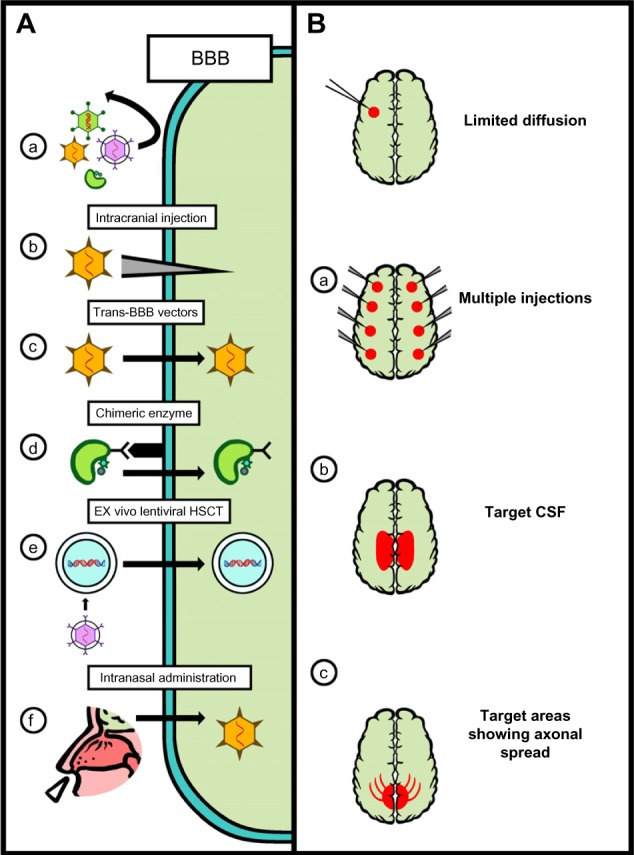Figure 3.

Strategies for CNS-directed gene therapy.
Notes: (A) (a) The BBB prevents most viruses and enzymes from entry into the CNS. (b) Intracranial injections anatomically bypass the BBB and have been used in human trials for infantile neuronal ceroid lipofuscinoses92 and MPSIIIA.84 (c) Certain serotypes of AAV have been reported to cross the BBB and have been used in MPSIIIB mice,56 MPSVII mice,99 and nonhuman primates.96 (d) The enzyme can be modified to have affinity for receptors that traffic proteins across the BBB and has been used in MPSIIIA mice.71 (e) Hematopoietic stem cells can be transfected ex vivo, then reintroduced to the patient. They can cross the BBB, smuggling the transfected gene into the CNS. This approach has been used in human trials for metachromatic leukodystrophy.103 (f) Intranasal delivery of adenovirus112 and AAV113 has also been shown to bypass the BBB in rats. (B) There is limited spread of virus within the CNS. (a) Multiple injections allow for multiple areas of the brain to be targeted even with limited diffusion.84 (b) Certain studies have tried to target the CSF to distribute the virus throughout the CNS.132,133 (c) Certain studies have tried to target areas of the brain that have axons extending widely to allow axonal transport of the virus or enzyme throughout the brain.134
Abbreviations: BBB, blood–brain barrier; HSCTs, hematopoietic stem cell transplantation; CNS, central nervous system; MPS, mucopolysaccharidosis; AAV, adeno-associated virus; CSF, cerebrospinal fluid.
